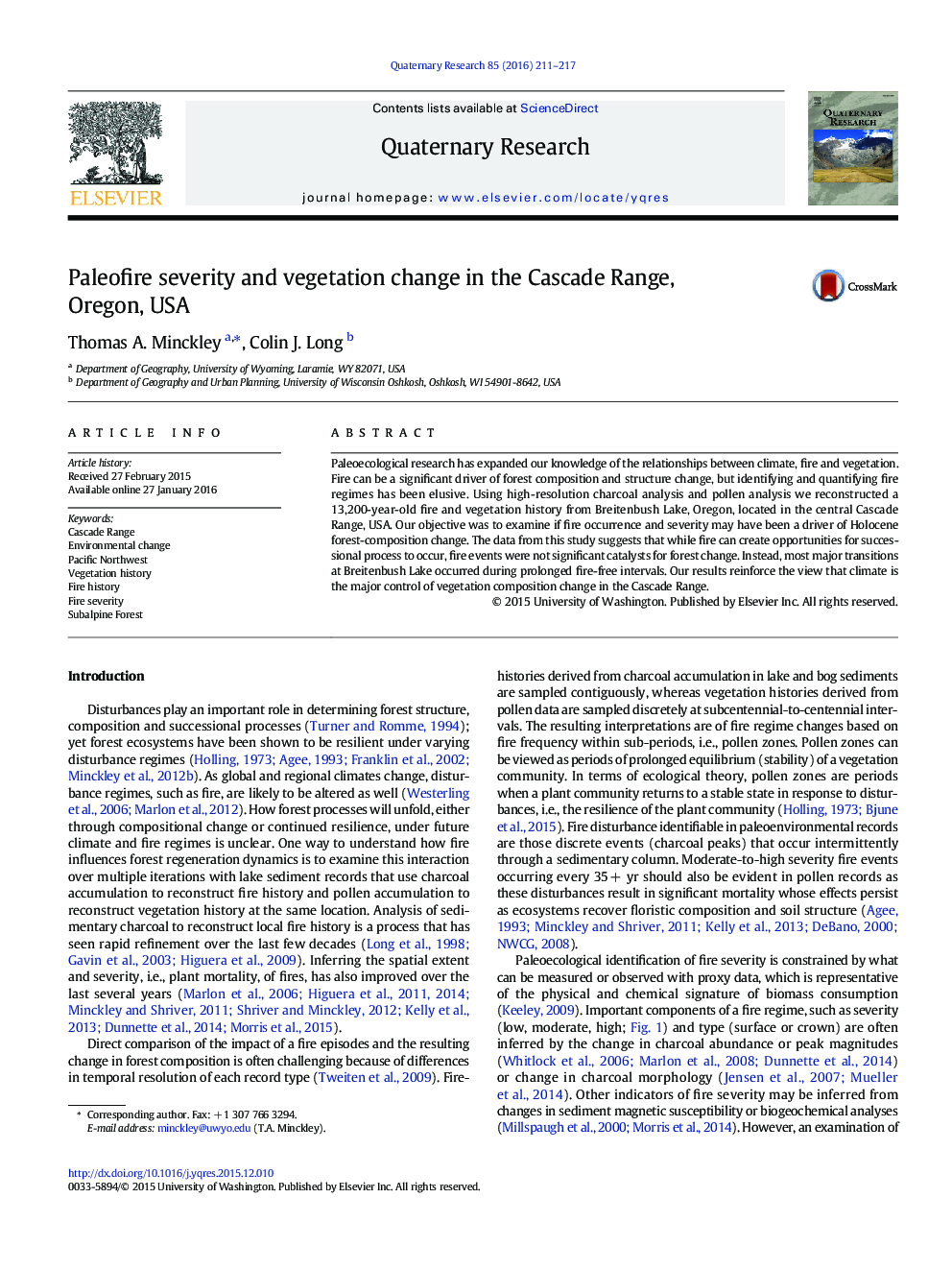| Article ID | Journal | Published Year | Pages | File Type |
|---|---|---|---|---|
| 1045058 | Quaternary Research | 2016 | 7 Pages |
Paleoecological research has expanded our knowledge of the relationships between climate, fire and vegetation. Fire can be a significant driver of forest composition and structure change, but identifying and quantifying fire regimes has been elusive. Using high-resolution charcoal analysis and pollen analysis we reconstructed a 13,200-year-old fire and vegetation history from Breitenbush Lake, Oregon, located in the central Cascade Range, USA. Our objective was to examine if fire occurrence and severity may have been a driver of Holocene forest-composition change. The data from this study suggests that while fire can create opportunities for successional process to occur, fire events were not significant catalysts for forest change. Instead, most major transitions at Breitenbush Lake occurred during prolonged fire-free intervals. Our results reinforce the view that climate is the major control of vegetation composition change in the Cascade Range.
